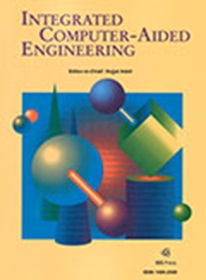Lightweight encryption for short-range wireless biometric authentication systems in Industry 4.0
IF 5.3
2区 计算机科学
Q1 COMPUTER SCIENCE, ARTIFICIAL INTELLIGENCE
引用次数: 5
Abstract
Most recent solutions for users’ authentication in Industry 4.0 scenarios are based on unique biological characteristics that are captured from users and recognized using artificial intelligence and machine learning technologies. These biometric applications tend to be computationally heavy, so to monitor users in an unobtrusive manner, sensing and processing modules are physically separated and connected through point-to-point wireless communication technologies. However, in this approach, sensors are very resource constrained, and common cryptographic techniques to protect private users’ information while traveling in the radio channel cannot be implemented because their computational cost. Thus, new security solutions for those biometric authentication systems in their short-range wireless communications are needed. Therefore, in this paper, we propose a new cryptographic approach addressing this scenario. The proposed solution employs lightweight operations to create a secure symmetric encryption solution. This cipher includes a pseudo-random number generator based, also, on simple computationally low-cost operations in order to create the secret key. In order to preserve and provide good security properties, the key generation and the encryption processes are fed with a chaotic number sequence obtained through the numerical integration of a new four-order hyperchaotic dynamic. An experimental analysis and a performance evaluation are provided in the experimental section, showing the good behavior of the described solution.工业4.0中短距离无线生物识别认证系统的轻量级加密
工业4.0场景中用户身份验证的最新解决方案是基于从用户那里捕获的独特生物特征,并使用人工智能和机器学习技术进行识别。这些生物识别应用往往需要大量的计算,因此为了以一种不显眼的方式监控用户,传感和处理模块在物理上是分开的,并通过点对点无线通信技术连接起来。然而,在这种方法中,传感器的资源非常有限,并且由于其计算成本,无法实现在无线信道中传输时保护私人用户信息的普通加密技术。因此,这些生物识别认证系统在其短距离无线通信中需要新的安全解决方案。因此,在本文中,我们提出了一种新的加密方法来解决这种情况。提出的解决方案采用轻量级操作来创建安全的对称加密解决方案。该密码包含一个伪随机数生成器,它也基于简单的低计算成本操作来创建密钥。在密钥生成和加密过程中,采用一种新的四阶超混沌动力学数值积分得到的混沌数列作为输入,以保证密钥的安全性。实验部分提供了实验分析和性能评估,表明所描述的解决方案具有良好的性能。
本文章由计算机程序翻译,如有差异,请以英文原文为准。
求助全文
约1分钟内获得全文
求助全文
来源期刊

Integrated Computer-Aided Engineering
工程技术-工程:综合
CiteScore
9.90
自引率
21.50%
发文量
21
审稿时长
>12 weeks
期刊介绍:
Integrated Computer-Aided Engineering (ICAE) was founded in 1993. "Based on the premise that interdisciplinary thinking and synergistic collaboration of disciplines can solve complex problems, open new frontiers, and lead to true innovations and breakthroughs, the cornerstone of industrial competitiveness and advancement of the society" as noted in the inaugural issue of the journal.
The focus of ICAE is the integration of leading edge and emerging computer and information technologies for innovative solution of engineering problems. The journal fosters interdisciplinary research and presents a unique forum for innovative computer-aided engineering. It also publishes novel industrial applications of CAE, thus helping to bring new computational paradigms from research labs and classrooms to reality. Areas covered by the journal include (but are not limited to) artificial intelligence, advanced signal processing, biologically inspired computing, cognitive modeling, concurrent engineering, database management, distributed computing, evolutionary computing, fuzzy logic, genetic algorithms, geometric modeling, intelligent and adaptive systems, internet-based technologies, knowledge discovery and engineering, machine learning, mechatronics, mobile computing, multimedia technologies, networking, neural network computing, object-oriented systems, optimization and search, parallel processing, robotics virtual reality, and visualization techniques.
 求助内容:
求助内容: 应助结果提醒方式:
应助结果提醒方式:


